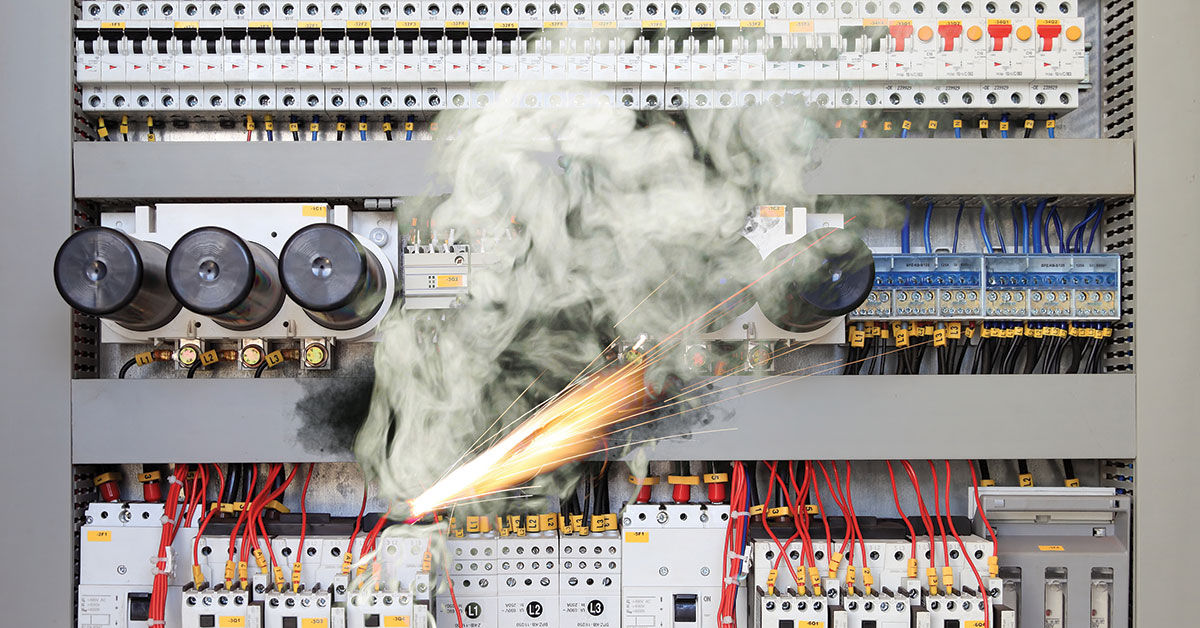Protecting workers from electric shock hazards
Date Posted: 07/15/2025

An electric shock can cause anything from a slight tingling sensation to immediate cardiac arrest. The severity depends on the amount of current, the current’s path through the body, the length of time the body remains in the circuit, and the current’s frequency.
Electrical burns are caused when current flows through tissues or bone, generating heat. A severe shock can cause damage to blood vessels, nerves, and muscles that won’t be visible. Anyone who receives a shock should seek emergency medical help immediately.
A shock may cause muscles to contract, preventing the person from pulling free. This increases the length of exposure, creating a greater risk of serious injury. Longer exposures at even low voltages can be just as dangerous as short exposures at higher voltages. Low voltage does not imply low hazard.
If a person is “frozen” to a live electrical contact, shut off the current immediately. If this is not possible, use boards, poles, or sticks made of wood or other nonconducting materials to push or pull the person away from the contact. It’s important to act quickly but remember to protect yourself as well from electrocution or shock.
Protecting workers
Methods to protect against shock include insulation, guarding, grounding, electrical protective devices, and safe work practices.
Guarding involves enclosing electric equipment to prevent contact, along with warning signs such as “Danger/High Voltage/Keep Out.”
Grounding involves creating a low-resistance path to the earth. It reduces the risk of shock, especially when used with other safety measures. An equipment ground helps protect the operator by providing a path for the current to pass from the tool or machine to the ground.
Circuit protection devices limit or stop the flow of current automatically in the event of a ground fault, overload, or short circuit in the wiring system. Examples include fuses, circuit breakers, ground-fault circuit interrupters (GFCIs), and arc-fault circuit interrupters. GFCIs are used in wet locations, construction sites, and other high-risk areas. They interrupt the flow of electricity to prevent electrocution.
Employees who work directly with electricity should use any personal protective equipment required for the jobs they perform. This may include rubber insulating gloves, hoods, sleeves, matting, blankets, and protective helmets designed to reduce electric shock hazard.
Using appropriate and properly maintained tools protects workers also. Workers should check each tool before using it. If they find a defect, they should immediately remove the tool from service and tag it so no one will use it until it has been repaired or replaced.
Training
Train employees in the safety procedures for their jobs, including how to inspect equipment for defects. When working on electrical equipment, basic procedures to follow include:
- Deenergizing the equipment,
- Using lockout/tagout to ensure the equipment remains deenergized,
- Using insulating protective equipment, and
- Maintaining a safe distance from energized parts.
In short, preventing electric shock requires delivering training on the hazards, safe work practices, and protections adopted by the employer.
How Safety Management Suite Can Help
Employees can’t protect themselves from workplace hazards if they haven’t been trained to recognize them, along with training on procedures to mitigate risk. The Training area of the J. J. Keller® SAFETY MANAGEMENT SUITE can help, with courses on many topics including electrical safety basics. This tool can help you deliver training with online courses, classroom materials, and many other assets.
E-mail Newsletter
Sign up to receive the weekly EHS Insider email newsletter for safety articles, news headlines, regulatory alerts, industry events, webcasts, and more.